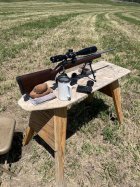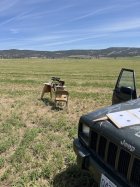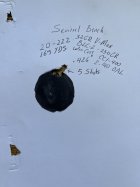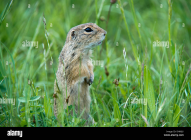urbanrifleman
Site $$ Sponsor
To me, if you're not shooting past 250 yds, there's no need for anything more than a good 223 with a 53gr vmax, and I'd even settle for a 40-50gr bullet. Of course a 20 cal will cover the same ground with even less recoil so there's that option as wellPast 200, the 53vmax starts to shine more in the wind, but at 300, it would be nice to have a little more gas in the tank. I don't have one, but it seems like a 223ai would start being more useful if you're shooting a lot in the 300yd neighborhood.
On the flip side, being able to reach 300-350 yds effectively will drastically increase the shot opportunities later in the season.
I'm thinking the 62 ELD VT and the 53 VMAX pretty much cover all the ground that you need to cover and somewhere between a 223 and a 22br is about all you need honestly.














